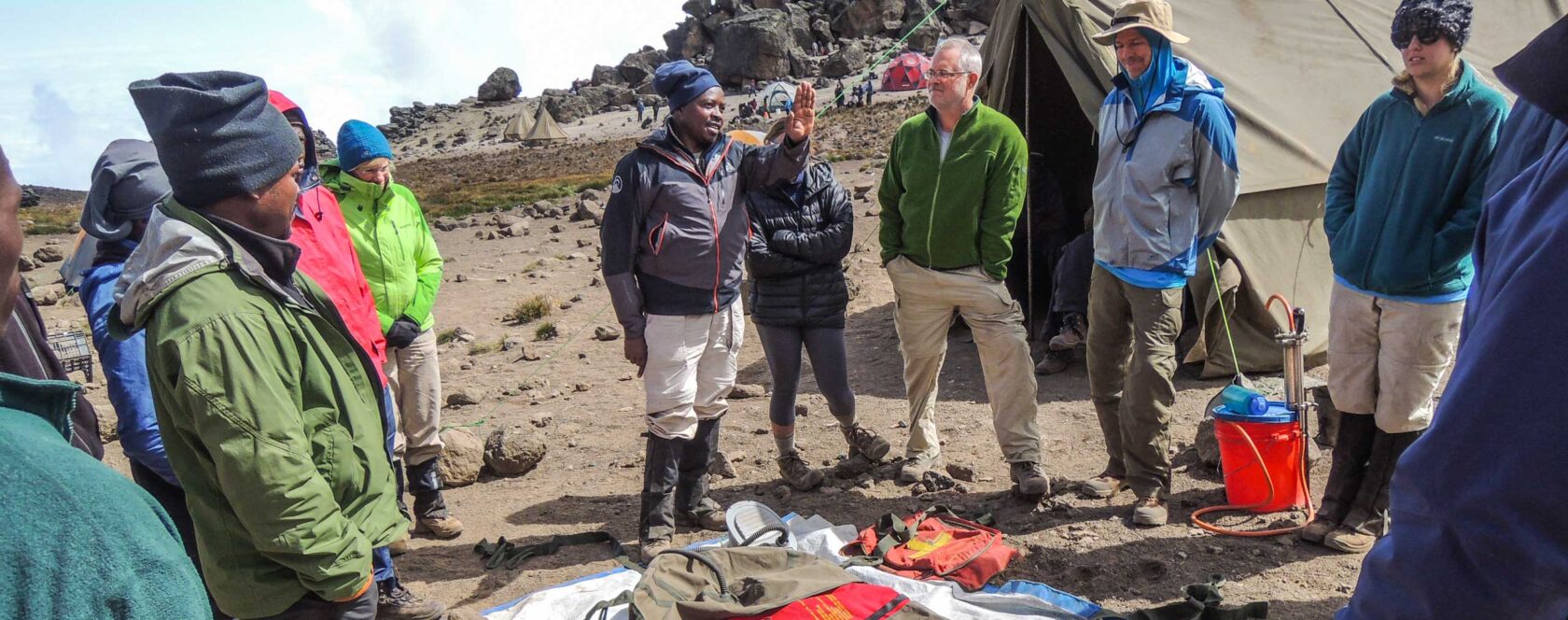
Kilimanjaro
Staying Safe & Guide Training
Climbing Kilimanjaro is a rigorous, but non-technical, hike that goes to high altitudes. All travel in the mountains involves inherent dangers, which can never be totally controlled. With that said, seeing to your safety is our #1 concern.
Our Trip Leaders and assistant guides are the most experienced on the mountain. All are certified Wilderness First Responders (WFR) and undergo extensive training beyond the normal standards of WFR to provide our climbers with the safest possible trek up Kilimanjaro. Every year we operate a WFR and Wilderness First Aid (WFA) training in Arusha, Tanzania and we were the first company to do so. This certification and ongoing training is mandatory for all of our Kilimanjaro guides. The WFR course is well known internationally and is often regarded as the world standard in outdoor medical care. We fly in experienced instructors from the United States each year to run this course and require all our guides to complete the course for re-certification every other year.
Each of our primary Trip Leaders have climbed Kili over one hundred times. They know the mountain as a second home and are incredible resources of knowledge and expertise on how to prepare for each day, safety precautions, and keeping climbers healthy in the hike toward the summit. They will monitor each climber’s health and wellness throughout the ascent and are trained to detect early signs of altitude sickness as well as in the protocols for high-altitude emergency evacuation.
On every Wilderness Travel Kilimanjaro climb, we provide the following safety equipment:
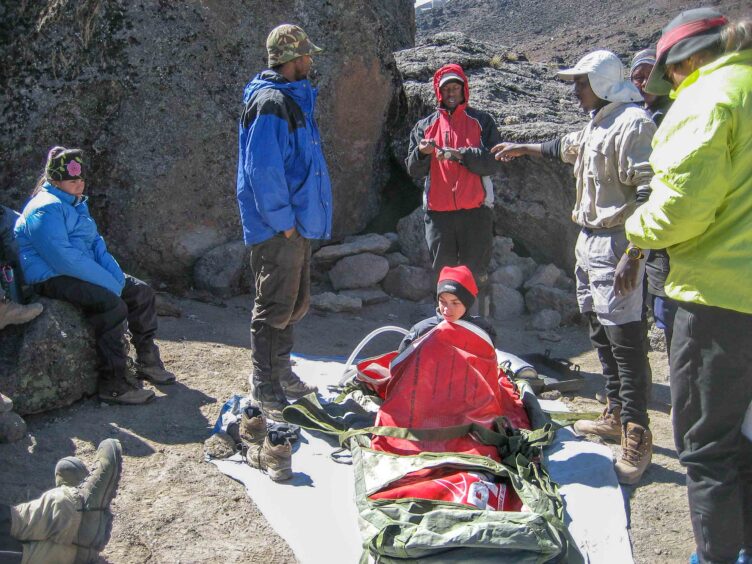
Gamow Bag
An inflatable pressure bag large enough to accommodate a person inside. These portable hyperbaric chambers are used for the treatment of Acute Mountain Sickness (AMS). By increasing air pressure around the patient, the bag simulates descent of as much as 7,000 feet, helping to relieve AMS symptoms. We will demonstrate the use of the Gamow bag to the group during each climb.
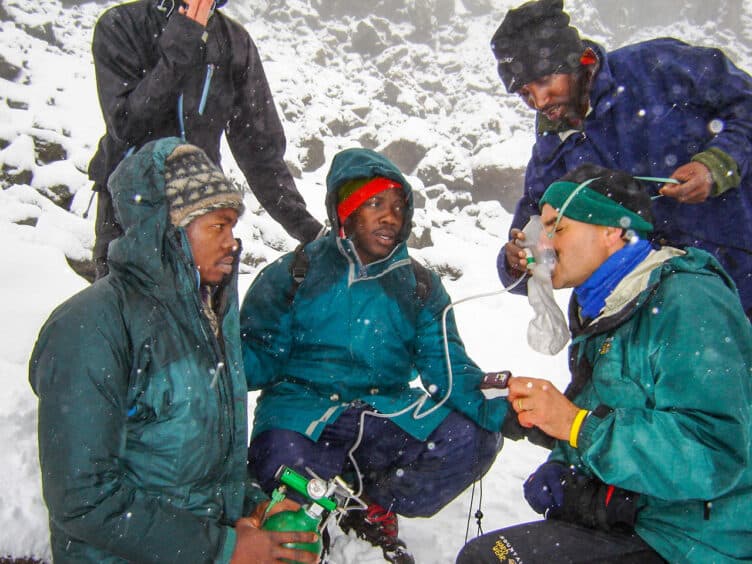
Emergency Oxygen
We carry bottled oxygen on each climb, enough to assist a climber for approximately 4 hours. It will be used exclusively when evacuating climbers from the mountain. It is not available, nor recommended, for climbers to use while ascending as it deactivates the body’s own acclimatization processes.
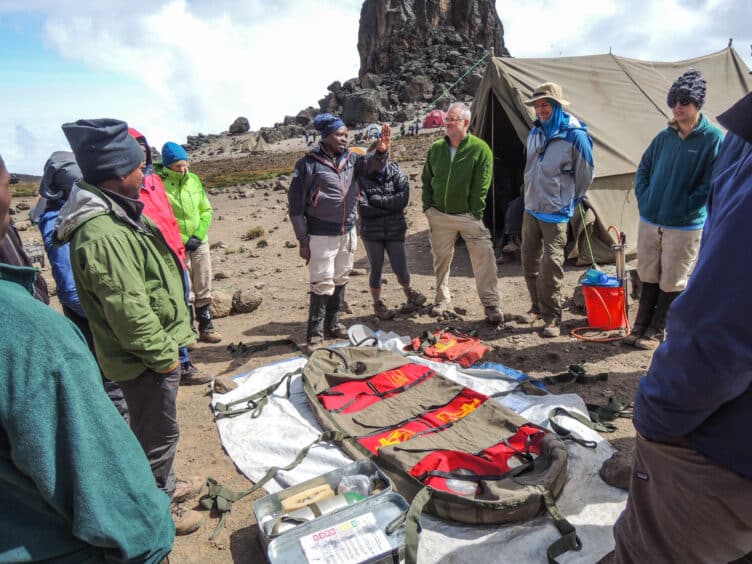
Stretcher
The definitive treatment for altitude illness is rapid descent. While this can be simulated through the use of a Gamow Hyperbaric Bag, there is no true substitute for getting the patient down and off the mountain as soon as possible. The stretcher is designed to allow us to carry a climber down the mountain over rough terrain while inside in a Gamow Bag.
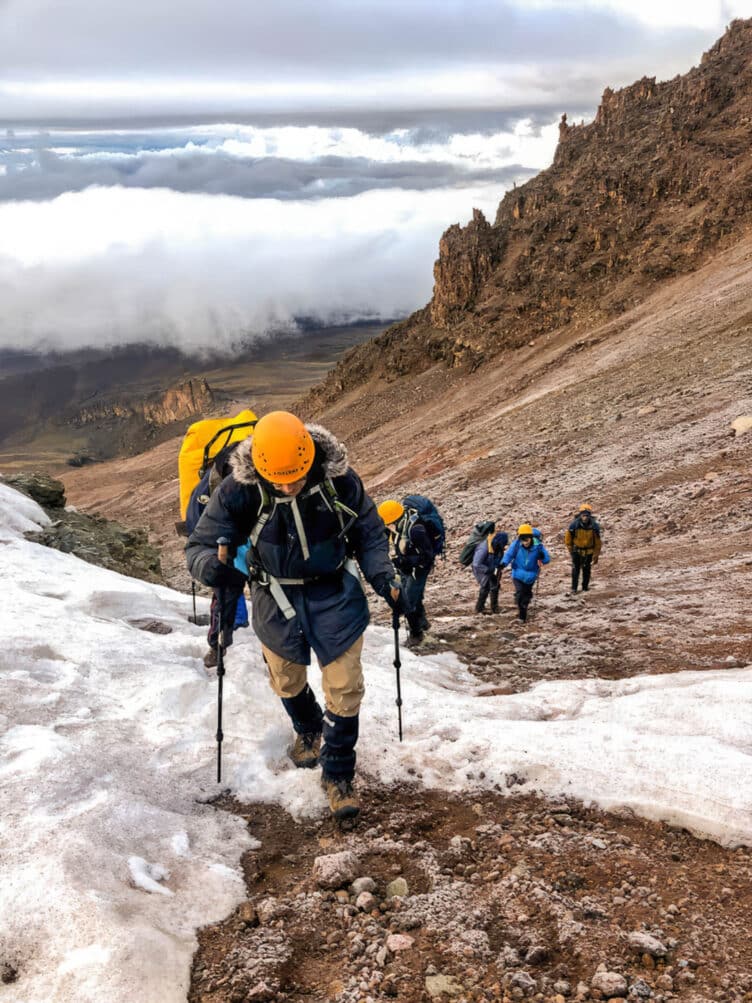
Pulse Oximeter & Report
This is a non-invasive sensor device that is placed on the fingertip to monitor the level of oxygen saturation in a person’s blood. Every morning and evening, the trip leader will record the readings for each trip member. Tracking the progress of each person’s oximeter levels gives the Trip Leader an additional tool to gauge each climber’s acclimatization success. While certainly not foolproof, it is a valued additional tool.
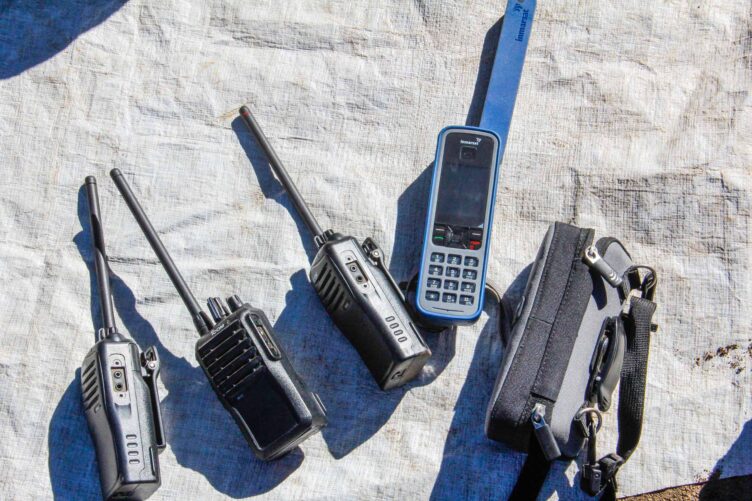
Radios & Phones
Your guides carry cell phones and radios, which allow them to communicate both between each other and with the base station at the Arusha office. Cell phone service is now available on most of the mountain. The Trip Leader will also carry either an HF radio or a satellite phone as a back-up. Finally, the guides carry VHF radios to communicate between themselves during the day. These VHF radios are also able to reach the base station once we are above 13,500 feet. Ongoing communication with the base camp provides the Trip Leaders with access to numerous resources, including calling in a helicopter (if available) to help with an evacuation (note: the highest a local helicopter can go is 13,000’).
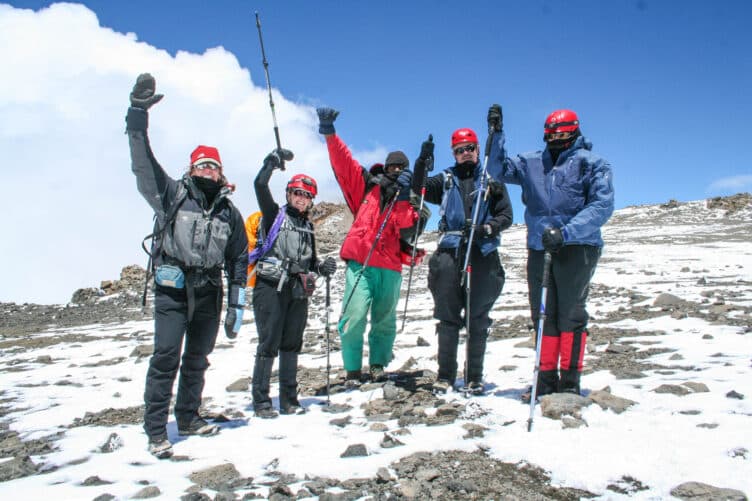
Evacuation Protocol
A climber’s need for evacuation from the mountain is at the discretion of the Trip Leader and climbers must heed the Trip Leader’s words should they recommend returning to lower altutides. One of the signs of AMS is impaired judgement!
Learn More
Talk to an Expert
Our Africa Specialists know every detail about our Kilimanjaro trips. They will be happy to answer any questions and help make sure it’s the right adventure for you. Contact us to learn more or book your trip today!


